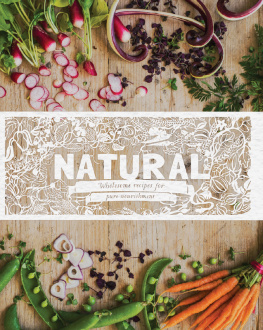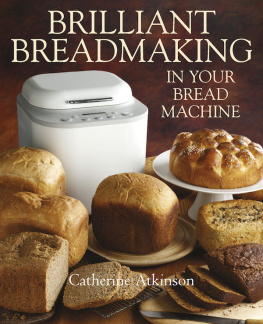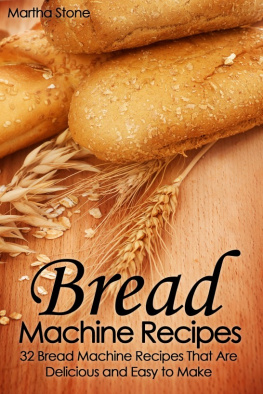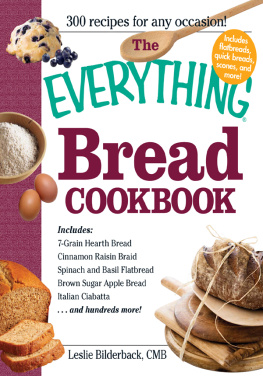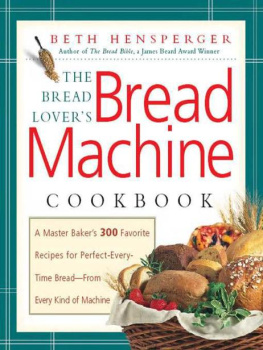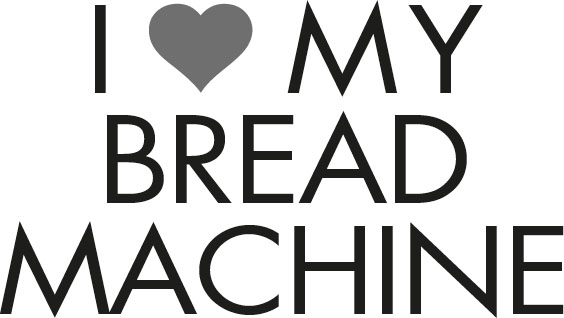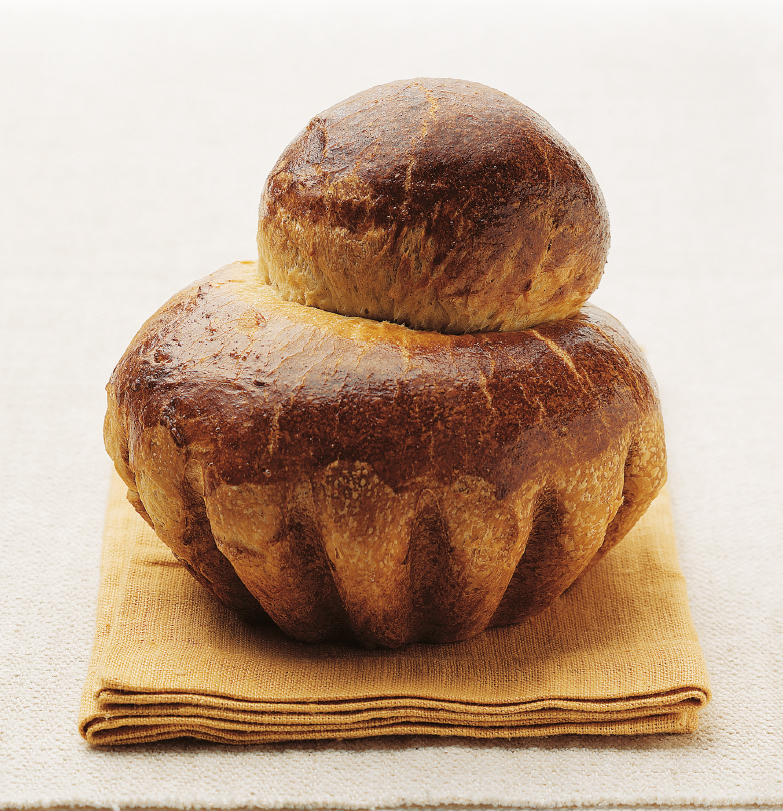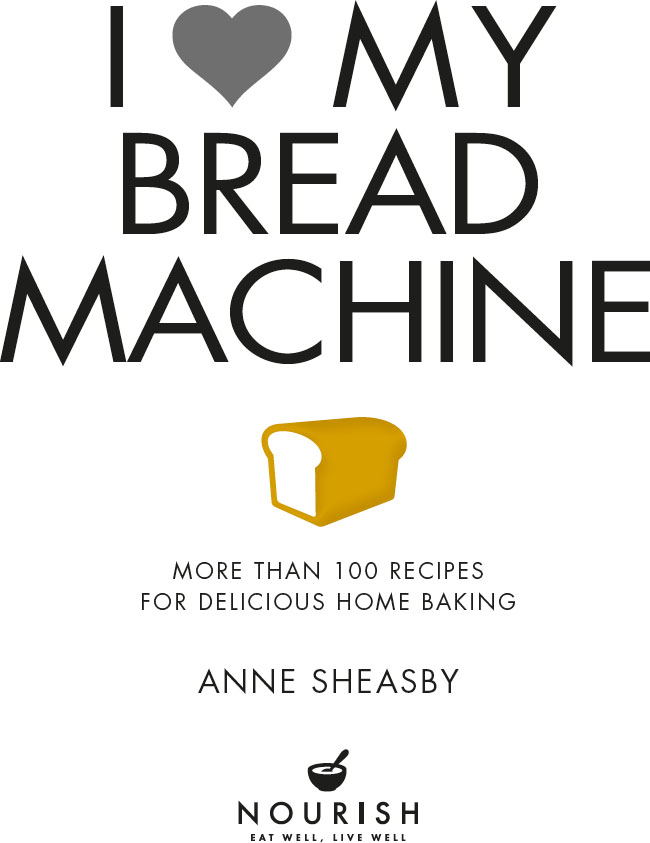First published in the UK and USA in 2017 by
Nourish, an imprint of Watkins Media Limited
19 Cecil Court
London WC2N 4EZ
Copyright Watkins Media Limited 2009, 2017
Text copyright Anne Sheasby 2009, 2017
Photography copyright Watkins Media Limited
2009, 2017
Recipes taken from The Breadmachine Bible,
first published by DBP in 2009
The right of Anne Sheasby to be identified as the Author of this text has been asserted in accordance with the Copyright, Designs and Patents Act of 1988.
All rights reserved. No part of this book may be reproduced in any form or by any electronic or mechanical means, including information storage and retrieval systems, without permission in writing from the publisher, except by a reviewer who may quote brief passages in a review.
Managing Editors: Sarah epton and rebecca Woods
Designer: Clare Thorpe
Commissioned photography: William Lingwood
Food Stylist: Bridget Sargeson
Prop Stylist: Helen Trent
A CIP record for this book is available from the
British Library
ISBN: 978-1-84899-317-4
10 9 8 7 6 5 4 3 2 1
Typeset in Futura
Colour reproduction by XY Digital
Printed in China
Publishers note
While every care has been taken in compiling the recipes for this book, Watkins Media Limited, or any other persons who have been involved in working on this publication, cannot accept responsibility for any errors or omissions, inadvertent or not, that may be found in the recipes or text, nor for any problems that may arise as a result of preparing one of these recipes. If you are pregnant or breastfeeding or have any special dietary requirements or medical conditions, it is advisable to consult a medical professional before following any of the recipes contained in this book.
Notes on the recipes
Unless otherwise stated:
Use medium (US large) organic or free-range eggs
All spoon and cup measures are level
Do not mix metric, imperial and US cup measurements:
1 tsp = 5ml 1 tbsp = 15ml 1 cup = 240ml
For all the gluten-free recipes in this book, where applicable, we used doves Farm (UK) gluten-free flours. Other brands of gluten-free flours are available.
We have included cooking temperatures for electric and gas ovens. Remember if you have a fan-assisted oven that you need to reduce the oven temperature slightly (usually by around 20 degrees) and/or adjust the cooking times. Please refer to the manufacturers guidelines for more specific information.
Please note that bread machines vary, so add the ingredients to the bread pan in the order specified in your instruction manual (if this differs from the instructions given in these recipes). The order in which we recommend that you add the ingredients to your bread pan will be applicable to many, but not all, bread machines, so please ensure that you read and follow your manufacturers instruction book carefully before preparing any of these recipes.
nourishbooks.com
CONTENTS
INTRODUCTION
BREAD OVER THE CENTURIES
Bread has been part of the staple diet of many countries worldwide for thousands of years and it is still held in high esteem within many cultures. Bread forms an important part of our everyday diet, providing a good, basic food that is both nutritious and delicious.
In centuries gone by, bread was initially baked over open fires, but gradually traditional ovens of brick or stone were built into homes or bakeries. Such ovens are still in use in the more rural areas of countries around the world, but the advance of technology and the development of modern ovens has seen the traditional types much less used. Over time, an increasing range of breads has been created, and new ingredients and flavourings have been discovered and added to basic recipes. Today we have a vast range of delicious loaves available to us in all shapes and sizes, offering many different tastes and textures.
Bakers, grocers, delicatessens, farmers markets and supermarkets stock an array of traditional loaves as well as popular regional loaves and breads from around the world.
We can choose from sweet or savoury breads, some plain, others flavoured with ingredients such as seeds, olives, cheese, herbs, sun-dried tomatoes, spices or fruit. A wide range of organic and specialist breads, such as gluten-or dairy-free breads, is also readily available, and artisan bakers offer traditional loaves as well as creating new and interesting breads.
Nevertheless, its hard to beat the rich aroma and full flavour of freshly made home-baked loaves, and making your own bread can be simple and very rewarding, especially with the use of a bread machine. These increasingly popular appliances are ideal for those of us with little time to spare, providing the satisfaction of baking your own bread using fresh, nourishing ingredients.
OUR DAILY BREAD
Bread is an appetizing food as well as being nutritious, and we should try to include a good proportion of starchy foods, such as bread, in our everyday diet. Many basic breads are low in fat, and bread provides an excellent source of starch the more complex carbohydrate that provides the body with a sustained energy source as well as some protein. All breads provide dietary fibre, and wholemeal/wholewheat and wholegrain varieties contain nearly four times more than white loaves, in addition to lots of B vitamins and some iron. White flour is often fortified with calcium, so in fact, white bread can contribute significantly to calcium intake.
Obviously, some of the more elaborate enriched breads and doughs contain more calories and fat than basic loaves, but these too can be enjoyed as special-occasion breads or treats within a balanced diet. Many of the quick breads such as teabreads can also make healthy snacks.
BREAD MACHINE RECIPES FOR ALL TYPES OF BREAD
This book by no means includes all bread machine recipes, but it offers many different types of breads from all over the world, enabling you to create tasty breads in your own home at a fraction of the cost of commercially produced loaves.
We include the basics of breadmaking and bread machines, essential information on key ingredients and techniques, as well as some useful hints and tips. Each recipe section is filled with a tempting selection of recipes, ranging from simple, rustic everyday breads to enriched, speciality loaves, and from traditional flat breads to quick and easy teabreads and tea-time treats. We also include a section on gluten-free breads, for those with a sensitivity to gluten.
Each recipe is clearly written and easy to follow, and includes guidance tips such as preparation and cooking times, as well as the number of servings.
By mastering your bread machine, and using the recipes in this book as a guide, you can experiment with all kinds of flavours, shapes and textures to suit your own tastes. So we invite you to take a leisurely journey through this eclectic collection and hope that you will enjoy the experience of creating and baking your own bread at home for many months and years to come.



